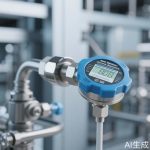In the fast-paced world of logistics and warehousing, maintaining optimal environmental conditions is not just a luxury—it’s a necessity. Warehouse temperature sensors have emerged as indispensable tools for businesses that store temperature-sensitive goods, such as pharmaceuticals, food products, and electronics. These advanced devices provide real-time monitoring and data insights, ensuring that products remain within specified temperature ranges, thereby preserving quality and compliance with industry regulations.
The importance of temperature control cannot be overstated. Fluctuations in temperature can lead to spoilage, reduced shelf life, and even total loss of inventory. For industries like healthcare, where medications and vaccines require strict temperature controls, the consequences of failure can be dire. Warehouse temperature sensors offer a proactive solution, alerting managers to deviations before they escalate into critical issues. This not only safeguards products but also protects a company’s reputation and bottom line.
Modern warehouse temperature sensors come equipped with a host of innovative features. Wireless connectivity, for example, allows for seamless integration with warehouse management systems (WMS). This enables automated data logging, remote monitoring, and instant notifications via email or SMS. With cloud-based platforms, stakeholders can access temperature data from anywhere in the world, making it easier to manage multiple facilities and ensure consistency across the supply chain.
Another significant advantage is the precision these sensors offer. High-accuracy models can detect minute changes in temperature, often within fractions of a degree. This level of detail is crucial for industries with stringent requirements, such as the food and beverage sector, where even slight variations can compromise product safety. Additionally, many sensors are designed to be rugged and durable, capable of withstanding harsh warehouse environments, including exposure to dust, moisture, and extreme temperatures themselves.
Implementing a robust temperature monitoring system also contributes to sustainability efforts. By optimizing energy usage for heating, ventilation, and air conditioning (HVAC) systems, warehouses can reduce their carbon footprint and lower operational costs. Smart sensors can identify inefficiencies and suggest adjustments, leading to more environmentally friendly practices without compromising on performance.
When selecting warehouse temperature sensors, it’s essential to consider factors such as calibration requirements, battery life, and ease of installation. Many providers offer customizable solutions tailored to specific industry needs, ensuring that businesses get the most value from their investment. Regular maintenance and calibration are key to maintaining accuracy, so partnering with a reliable supplier who offers ongoing support is highly recommended.
In conclusion, warehouse temperature sensors are more than just gadgets—they are critical components of modern supply chain management. By investing in these technologies, businesses can enhance product safety, achieve regulatory compliance, and drive operational efficiency. As the demand for temperature-sensitive goods continues to grow, adopting advanced monitoring solutions will be a defining factor in staying competitive and successful in the market.




Leave a Message